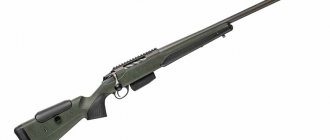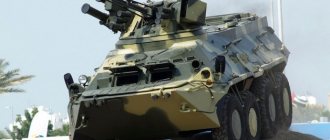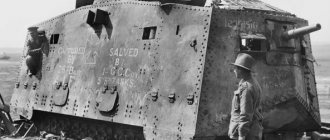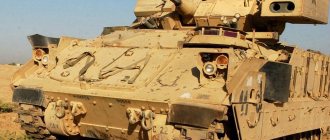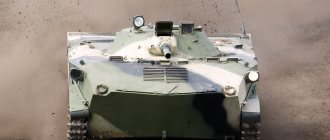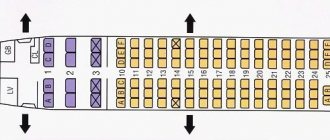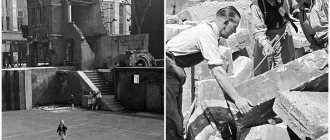| Eurocopter (Sud Aviation / Aerospatiale) SA 341 / SA 342 Gazelle | |
| Gazelle from the French Army (Armée de Terre) | |
| Description | |
| Boy | attack helicopter and multi-role |
| Crew | 2 |
| Builder | Aerospatiale Westland Helicopters SOKO |
| First flight date | April 7, 1967 |
| Commissioning date | 1973 |
| Main user | Armée de Terre |
| Other users | British Army RV and PVO VS Al-Quwwat al-Jawwiya al-Misriya others |
| Samples | 663 (at the end of 2022) |
| Designed from | Aerospatiale Alouette III |
| Military Factory.com | |
| Helicopter entries on Wikipedia | |
| Aerospatiale SA 341 Gazelle | |
| Gazelle SA 341 F2 French Army | |
| Dimensions and weight | |
| Perspective tables | |
| Length | 11,97 |
| Length | 2 months |
| Height | 2.72 m |
| Rotor diameter | 10.5 m |
| Rotor surface | 86,5 |
| Empty weight | 341 g: 917 341 H: 908 kg |
| Maximum take-off weight | 1800 kg |
| Passengers | 3 |
| Movement | |
| Motor | 1 Turbomeca Astazou turbine |
| Power | 440 kW (590 shp) |
| Performance | |
| VNE | 310 km/h (167) |
| Cruising speed | 264 km/h (142 knots) |
| Dialing speed | 540 m/min |
| Autonomy | 670 km |
| Tangency | 5,000 (16,400 ft) |
| Jane 1975-76[1] | |
| Helicopter entries on Wikipedia | |
L' Gazelle Aerospatiale
The (now Eurocopter) is a multi-role single turbine helicopter featuring a rotor with three blades, designed by Southern Aviation in France in the late sixties. Used by many civilian and military users around the world, it was mass-produced by the Société Nationale Industrielle Aérospatiale (SNIAS or Aérospatiale) starting in the early seventies in collaboration with British Westland Helicopters.
The Gazelle was the main attack helicopter of the French army until the introduction of the Eurocopter Tiger and was therefore used in all conflicts involving France from the eighties until today. Also available in two main civilian versions (called SA 341
As well as
SA 342
), these helicopters were mainly purchased by the armed forces of various countries, including the United Kingdom, Morocco, Yugoslavia, Egypt, Kuwait, Iraq, Niger. Despite the time that has passed since the start of the project, the Gazelle is still the main component of combat helicopters in many countries around the world.
Development
The Gazelle was developed by Sud Aviation in the mid-1960s to meet Army requirements for a light utility helicopter to replace the Alouette II. The project attracted interest in the UK from the outset and was included in the Franco-British helicopter development and co-production agreement involving Sud Aviation and the British helicopter company Westland (now AgustaWestland). Agreement signed on February 22. 1967, laid the foundation for UK production of 292 Gazelles and 48 Puma French concepts and ordered by the British Armed Forces. In return, Sud Aviation (later Aérospatiale) was given the opportunity to participate in the construction of 40 naval helicopters. Westland Lynx sorted by Sea Nation French.
On April 7 of the same year, the prototype made its first flight. SA 340
with F-WOFH stamps and test pilot Jean Boulet at the controls.
The model already had the profile of the designs that would later become the Gazelle, with a more aerodynamic five-seat cabin than its predecessor Alouette, but was still equipped with an engine. Turbomeca Astazou III as well as the main and tail rotors of the previous model. Development continued at the Sud Aviation plant in Marignan near Marseille and almost a year later, on April 17, 1968, the second Gazelle prototype flew, with the F-ZWRA badges and the more representative SA 341
to follow. This second prototype introduced a new tail rotor concept consisting of a 13-blade fan inserted into a vertical rudder structure called Fenestron, as well as a semi-rigid main rotor with innovative laminar blades for the time, made in composite material and the result of a joint development of the French company and Bolków German.[2]
On 16 August 1971 the SA 341 series flew for the first time, and production began of versions marked by the letters of the alphabet: B, C, D and E for the British Armed Forces or the Royal Air Force, the Royal Navy (including the Royal Marines) and the British Army , while the "F" version was built to detailed French Army requirements.
The four versions of the Gazelle assembled by Westland for the United Kingdom were renamed to the British military designation.
- SA 341B
version equipped in accordance with the requirements of the Army Air Corps took the name
Gazelle AN.1
(from
the
K
RMI H.Elicopter Mark
1
).
She was recruited for this task by the Air Observation Post
(AOP), which includes the Ordnance Directorate, the Airborne Forward Air Flow Controller (ABFAC), air strike coordination on the ground, casualty evacuation, communications, command and control, and radio communications. - L' SA 341C
was named
Gazelle XT.2
and worked as a trainer for the Royal Navy. - L ' SA.341D
assigned to the RAF took the name
Gazelle HT.3
because it worked as a trainer (from English
Helicopter Trainer - HT
). - L' SA 341E
it was instead adopted by the RAF for communications and VIP transport tasks and renamed
Gazelle HCC.4
.
All training options have been replaced with Eurocopter AS350 Belka HT1.
In France, the Gazelle was conceived as an anti-tank helicopter. HOT Euromodel and assigned to Aviation légère de l'armée de terre (ALAT) with the name SA 341F
.
In the first version, the turbine engine was an Astazou III C rated at 590 hp, but plans were made to upgrade the helicopters to a standard F2
with "Fenestron" modifications, drift, rotor head and engine upgrades to the C2 version, all with the goal of bringing the maximum take-off weight to 1900 kg.
GAZelle SA342M from Aviation légère de l'armée de terre (ALAT)
Detail of cabin and upper cable cutter
Almost simultaneously with the start of Franco-British production on October 1, 1971, an agreement was signed on the construction of the Alouette ship under license in Yugoslavia with a helicopter company. SOKO who did the attack, reconnaissance and rescue versions.
Along with military production, production and sale of a civilian version called SA 341G
, equipped with an Astazou III A engine with 590 hp. This version managed to obtain an important certificate in the USA for operation in low visibility conditions even in a single-pilot configuration, becoming the first helicopter to achieve this result.
Continued development activities aimed at increasing productivity led to the development of a new version called SA 342
whose first flight was on May 11, 1973. These helicopters were also built under license by the Yugoslav company SOKO, and French-built helicopters were supplied to Arab countries for use in desert climates.
In 1990, French ALAT began receiving Gazelle SA 342L1
and subjected existing helicopters to modifications, including the removal of a
homing
to search for radio sources, as well as the addition of cable cutters, knives placed above and below the cockpit capable of cutting cables in the event of a collision during flight.
That same year, as a result of France's involvement in the Gulf War, Kuwait brought an anti-aircraft version equipped with the MBDA Mistral air-to-air missile and named the Gazelle Celtic
.
War experience was followed by mid-nineties upgrade to JVN Standard
of all helicopters delivered to France and consisting of avionics modifications and precautions when using night vision systems, such as painting the cockpit black and installing special anti-collision lights for formation flight.
In the same years, an updated version of the Gazelle Celtic
anti-aircraft, updated with new short-range Mistral missiles and a certain
Gazelle Mistral
.
In 1998, the night vision and targeting system, which is now the system, was updated on French anti-tank helicopters. Vivian
, and FLIR for infrared viewing is integrated with a camera and targeting laser, resulting in the named
Gazelle Vivian
.
The Gazelle is being replaced by the French Army's attack helicopter as it is being replaced by the Eurocopter Tiger, but will continue to be used for light transport and liaison roles.
Technical data (HS 341)
Data link
: Airplane Magazine Vol 1 No. 6
General characteristics
- Crew:
2 - Capacity:
3 passengers - Longitude:
11,97 - Main rotor diameter:
10.5 m - Height:
3.15 m - Area of a circle:
86,5 - Empty weight
908 kg - Curb weight:
1800 kg - Powerplant:
1 × Turbomeca Astazou IIIA turbocharger.
Power:
three-bladed main rotor and fenestron-type tail rotor.
Performance
- Maximum operating speed (V no):
310 km/h (193 mph; 167 kn) - Cruise speed (Vc):
264 km/h (164 mph; 143 kn) - Alkans:
670 (362 nmi; 416 mi) - Flight ceiling:
5,000 (16,404 ft) - Ascent speed:
9 m/s (1772 ft/min)
Technique
The fenestron or fan
, or
the fan in the fin
The Helicopter, although generally reminiscent of the Alouette, actually contains important innovations over its predecessor. Gazelle was the first helicopter equipped with Fenestron
" or "
fan
", a type of tail rotor of a new concept that can significantly reduce noise levels. In addition, the rotor blades were made from the outset in composite materials, a solution that is now widely used in modern helicopters and can improve passenger comfort by reducing vibration.
A civilian version called the SA 341G in 1975 was the first helicopter to be deployed for cat operations. I (adverse weather) in single-pilot configuration.
The frame consists of a sandwich structure of honeycomb carbon fiber between two light alloy sheets. The trolley is not equipped with shock absorbers, which eliminates the risk of resonance with the ground - a dangerous condition for other helicopter models.
At the Gazelle, special measures were taken to simplify ground handling during the pre-flight and post-flight phases, which reduced downtime and maintenance costs, as well as increased reliability. By comparison, the duration of Alouette II or III maintenance operations between one mission and the next is approximately one hour, compared to 30 minutes for the Gazelle.
The models used by the Army Air Corps have recently been improved with the introduction of the Direct Voice Input (DVI) system developed by QinetiQ. This system allows you to control avionics using voice commands spoken into standard microphones and flight helmets supplied to crews. The system does not require special calibration to adapt to individual users, which allows high recognition rates to be obtained regardless of whether the user has used the system before. DVI, in addition to adding the ability to control aircraft systems using voice commands, allows access to sensor information without having to take your hands off the flight controls or your eyes away from others.[3]
Gazelles were also built in Egypt by ABHCO and in Yugoslavia by SOKO.
Operational use
France The French Army used the Gazelle many times, especially during interventions in Africa and peacekeeping
. On the list, note operations in Chad (1980), Yugoslavia (1990), Djibouti (1991-1992), Somalia (1993) and Ivory Coast (2002-present). During Operation Desert Storm, Gazelle armed with HOT missiles were used against Iraqi armored formations, but were used very cautiously as Iraqi enemies as well as British allies were equipped with Gazelle helicopters and there was therefore a real risk of fratricidal clashes . Iraq Iraq acquired a significant number of Gazelle helicopters in the 1970s and 1980s, armed with HOT missiles, which were used extensively during the war. Iran-Iraq war. In contrast, during the Gulf War the Iraqi Gazelle saw limited use, both due to the effects of the spare parts embargo and the reduction of the vehicle fleet as a result of the previous conflict. Factors limiting use also included air superiority of the opposing coalition and a policy aimed at sparing the air component rather than using it in head-on collisions.
Gazelle SA-341L, captured from the Syrians by the Israelis and exhibited at the Heil Ha'Avir Hatzerim Museum, in Beer Sheva with both cockades
Syria Syrian Gazelles were used during the 1982 Lebanon War. They were successful against armored forces. Israeli, suffering average losses. At the end of the conflict, 6 helicopters were lost in 200 combat missions using 100 armored personnel carriers, and other Israeli vehicles were also destroyed.[4] The United Kingdom Gazelle was used in combat in the Falklands War, Kuwait, Iraq, Kosovo and the 8th Army Air Corps flight in support of the SAS. It was also used for patrol duties in Northern Ireland. British Gazelles were only armed for use in the Falklands, when they were equipped with machine guns and rocket launchers, but were not actually used with these weapons in combat. Yugoslavia SA 341/342 Gazelle GAMA (Yugoslav version) used by the Republika Srpska Air Force and the Serbian Republic of Krajina Air Force over the Yugoslav Civil War which took place from 1991 to 1995, and with RV and PVO VJ Yugoslav during the Kosovo War . Lebanon There al-Quwwat al-Jawwiyya al-Lubnaniya used the Gazelle against the Fatah al-Islam formation linked to al-Qaeda, during the 2007 siege of Nahr el-Bared. Ireland L'Irish Air Corps used two Gazelle helicopters in as school ones.
Versions
GAZelle SA-342M
SA 340 First prototype.
Without Fenestron
and with Alouette engine and transmission.
SA 341 Four prototypes. First flight - August 2, 1968. The third one is based on technical specifications. British Army. Assembled in France, it was a prototype of the later Gazelle AH.1. First flight April 28, 1970. SA 341.1001 First production model for delivery to the French army. Intended for flight testing from August 6, 1971. Compared to the first prototypes, it had a longer cabin, larger tail unit and engine. Turbomeca Astazou Improved IIIA. SA 341B ( Westland Gazelle AN.1
)
British Army Westland Gazelle AH1 in 1983
Version built for the British Army and assembled by Westland.
It was equipped with an Astazou IIIN engine, a search light and a Decca Doppler 80 radar. It made its first flight on January 31, 1972. SA 341C ( Westland Gazelle HT.2
) Training version for the British Fleet Air Arm.
Equipped with an Astazou IIIN engine, stabilization system and lifting winch. First flight July 6, 1972, entered service December 10, 1974. 30 units produced. SA 341D ( Westland Gazelle HT.3
) Training version built for the Royal Air Force, equipped with the same engine and stabilization system as the 341C.
First delivery July 16, 1973, with a total of 14 units produced. SA 341E ( Westland Gazelle HCC.4
) Personal liaison and transport helicopter built as a single unit for the Royal Air Force.
SA 341F Version built for the French army and equipped with an Astazou IIIC engine from 590 hp. 166 copies were produced. SA 341 F2 Improved "F" variant with Astazou IIIC2 engine and Fenestron, drift and main rotor modifications. The maximum take-off weight has been increased to 1,900 kg. Used by the French Army Light Aviation in three variants: two unarmed, used for communications, personal transport and training, plus a third army with a cannon. M621 of 20 mm is mounted on the right. The last weaponized variant only has two seats, as the rear is occupied by the 240 rounds of ammunition available for the weapon. Gazelle Celtic The variant turned out to be a modification of some Gazelle on the occasion of the release of the Gulf War aimed at creating anti-aircraft helicopters armed with Mistral missiles. This variant foreshadows the next " Gazelle Mistral
" later made from a later basic version.
Aerospatiale SA 341G Gazelle
SA 341G Civilian version of the SA 341F with 590 hp Astazou IIIA engine, officially certified on June 7, 1972.
It was the first helicopter to be approved for U.S. service in the United States. IFR Cat 1 in single-pilot configuration. Examples of the elongated " Stretched Gazelle
" or "
Rallonge
" shape were produced, with the cabin modified to provide an additional 20 cm of space for greater legroom for rear passengers.
SA 341H Military export version with Astazou IIIB engine, built under license from SOKO in Yugoslavia. The agreement was signed on October 1, 1971. SOKO NO-42 Version of SA 341H, built in Yugoslavia. SOKO HI-42 Hera Reconnaissance version SA 341H SOKO XN-42M Gama Attack version SA 341H SOKO XC-42 Ambulance version of the aircraft SA 341H SA 342J Civil version SA 342L with a more powerful Astazou XIV H engine with a power of 649 kW (870 hp). ) and the Fenestron engine were improved, which made it possible to increase the maximum take-off weight. The version was certified on April 24, 1976 and entered service in 1977. SA 342K Military version for export, optimized for warm climates. Mainly based on the SA 341 design, which replaced the engine with an Astazou XIV H and added air intake protection. First flight May 11, 1973; Originally sold to Kuwait. SA 342L Military version, equivalent to the SA 342J and therefore powered by the Astazou XIV engine. Manufactured under license from the Yugoslav Soko and the Anglo-Egyptian Arab British Helicopter Company
(ABHCo).
These helicopters could carry a variety of weapons systems and equipment, including six anti-tank missiles. HOT Euromodel. SOKO KHN-45M Gama 2 Attack variant of the Yugoslavian-built SA 342L. SA 342L1 French Army version, mainly consisting of the SA 342M with modified avionics and compatible with night vision systems. Gazelle Mistral Modification of some SA 342L1 to convert them into an anti-aircraft variant, armed with new Mistral heat-seeking missiles, the short-range " Air-Air Très Courte Portée
" (AATCP) version. Take-off weight from 1,900 kg to 2,100 kg.
Gazelle Vivian
from the French Army (Armée de Terre) at the 2005 Radom Air Show
SA 342M Anti-tank version for the French Army, powered by the Astazou XIV M engine and armed with four Euromissile HOT anti-tank missiles with the SFIM APX M397 stabilized targeting system. After 2000, following the progressive irradiation of the SA 341F2 and the reduction of the overall fleet, some SA 342Ms were disarmed to replace helicopters retired for communications and people transport duties. Gazelle Vivian
SA 342M HOT is modified to install the new
Vivian
vision and targeting device system, which combines in one device a thermal imaging camera, optics and a laser for observation and targeting in any visibility conditions. However, this system, heavier than the previous equipment, was installed in the same location on the roof of the cabin on the operator side of the system and required reinforcement of the structure and replacement of the main rotor blades with main rotor blades.AS 350 Ecureuil to increase productivity, including maximum take-off weight. SA 342M1 The SA 342M is modified to improve performance by using Ecureuil-derived rotor blades.
Flight of the Gazelle. Light rotorcraft from France
In the post-war years, France was one of the leading countries in the development of military aircraft and guided anti-tank missiles. At a certain stage, French jet fighters in the global arms market were in sharp competition with Soviet and American aircraft. Currently, few people remember that the French army adopted the SS.10 guided anti-tank missile into service in 1955. The world's first serial ATGM SS.10 was created by Nord-Aviation specialists based on the German Ruhrstahl X-7 and was controlled by wire. In 1956, an improved model, the SS.11, was submitted for testing. The aviation version of this missile was designated AS.11. The missile with a launch weight of 30 kg had a launch range from 500 m to 3000 m and carried a cumulative warhead weighing 6.8 kg with armor penetration up to 600 mm of homogeneous armor, which made it possible to reliably hit all tanks existing at that time. Features of the aerodynamic design and guidance system predetermined the low flight speed - 190 m/s. Like many other first-generation ATGMs, the missile was aimed manually by the operator, while the burning tracer installed in the tail section had to be visually aligned with the target.
ATGM AS.11
First experience in the use of aircraft guided anti-tank missiles
Initially, AS.11 guided missiles were suspended under a transport aircraft with two Dassault MD 311 Flamant piston engines.
These vehicles were used by the French Air Force in Algeria for reconnaissance and bombing of rebel positions. The guidance operator's workplace was located in the glazed bow. However, the aircraft was not well suited to the role of carrying wire-guided missiles. At launch, the flight speed was reduced to 250 km/h. At the same time, any maneuvers until the end of missile guidance were excluded. The attack on the target was carried out from a shallow dive; due to a significant error in guidance, the launch range did not exceed 2000 m. Although several warehouses and shelters equipped in caves were destroyed with the help of AS.11 ATGMs launched from an aircraft, it soon became clear that the helicopter was capable of hovering in the air can achieve better results. The first helicopter to receive guided missiles was the SA.318С Alouette II developed by Sud Aviation (later Aérospatiale). This is a light and compact machine with a maximum take-off weight of 1600 kg, equipped with one Turbomeca Artouste IIC6 turboshaft engine with 530 hp. developed in horizontal flight up to 185 km/h. The Alouette II could carry up to four wire-guided missiles. The ATGM operator and guidance equipment were located to the left of the pilot. Alouette II helicopters with AS.11 ATGMs were used against rebels in Algeria together with Sikorsky H-34 and Piasecky H-21 helicopters armed with NAR, 7.5 - 12.7 mm machine guns and 20 mm cannons. The targets for the guided missiles were partisan strongholds and cave entrances. In general, AS.11 carrier helicopters performed well during combat operations, but they turned out to be very vulnerable even to light small arms fire. In connection with this local armor, the most vulnerable parts of the engine were covered, the fuel tank was protected from leaks in the event of a shot and began to be filled with nitrogen, the pilots wore body armor and helmets during combat missions.
Improvement of carriers and guidance systems for ATGM AS.11
Taking into account the experience of combat operations in Algeria, the SA.3164 Alouette III Armee fire support helicopter was created. The helicopter cockpit was covered with bulletproof armor; the armament included four ATGMs and a mobile 7.5 mm machine gun mount.
The helicopter did not pass the tests, since the installation of armor protection deteriorated the flight characteristics too much. In addition, the effectiveness of the use of missiles directly depended on the qualifications of the guidance operator. A well-trained operator in “greenhouse” range conditions hit an average of 50% of targets. However, during actual combat operations, due to stress and the need to evade fire from the ground, the effectiveness of launches did not exceed 30%. Although this result was significantly higher than with the use of unguided missiles, the military demanded to increase the effectiveness of combat sorties of helicopters armed with ATGMs.
At the end of the 1960s, the SA.316B Alouette III helicopter equipped with a semi-automatic missile guidance system entered service. The armament remained the same as on the anti-tank Alouette II - four ATGMs, but combat effectiveness increased thanks to the introduction of SACLOS equipment and upgraded AS.11Harpon missiles. When launching a rocket, the operator now only had to keep the target in the crosshairs, and the automation itself brought the rocket to the line of sight.
Launch of AS.11 Harpon ATGM with Alouette III
The flight characteristics of the helicopter, which in many ways was a further development of the Alouette II, also improved. This machine, with a maximum take-off weight of 2250 kg, could take a payload of 750 kg. Thanks to the installation of a new Turbomeca Artouste IIIB turboshaft engine with a power of 870 hp, the maximum flight speed increased to 210 km/h. In addition to the AS.11 Harpon ATGM, 7.5 mm machine guns and a 20 mm cannon, the armament could include two heavier AS.12 missiles. with a similar guidance system. The AS.12 aircraft guided missile looked like an enlarged AS.11 and had a launch weight of 76 kg. With a launch range of up to 7000 m, the missile carried a 28 kg semi-armor-piercing warhead. The main purpose of the AS.12 missile was the destruction of point stationary ground targets and the fight against ships of small displacement. But if necessary, this missile could be used against armored vehicles or against manpower. For this purpose, replaceable cumulative and fragmentation warheads were supplied to the troops. This, however, does not mean that the targeted launch range against the tank was greater than on the AS.11 - the primitive guidance system at a distance of more than 3000 m gave too large an error. On the external sling, instead of guided weapons, units with 68-mm NAR could also be placed.
Helicopter "Gazelle" and its modifications
In 1966, Sud Aviation began work on a light helicopter that was supposed to replace the Alouette-3. In 1967, the French and British governments entered into an agreement for joint development and production. The British contractor was Westland. The helicopter was intended for reconnaissance, communications, transportation of personnel, evacuation of the wounded and transportation of small cargo, as well as for combating tanks and fire support. The first prototype, known as the SA.340, flew on April 7, 1967. Initially, the helicopter used the tail section and transmission from Alouette-2.
First SA.340 Gazelle prototype during test flight
Subsequently, production vehicles received a built-in tail rotor (fenestron) and a rigid main rotor from Bolkow. These innovations largely determined the success of the helicopter. Fenestron, although requiring a slight increase in power at low speeds, has greater efficiency when flying in cruising mode, and is considered safer. The supporting system, similar to that used on the Messerschmitt-Bölkow-Blohm VO 105 helicopter, demonstrated better reliability, and the composite main rotor blades had a longer service life. In addition, such a propeller more easily switches to autorotation mode, which increased the chances of a safe landing in the event of an engine failure. Based on the operating experience of previous models, ease of use and minimal life cycle cost were taken into account even at the design stage. The Gazelle was designed so that it could be easily maintained; all bearings did not require additional lubrication throughout their entire service life. Most nodes were quickly accessible. Particular emphasis was placed on achieving minimum maintenance requirements and reducing helicopter operating costs. Many components were designed to last in excess of 700 flight hours, and in some cases 1,200 flight hours before requiring replacement.
Pre-production helicopter SA.341
In May 1970, the first prototype of the SA.341 helicopter took off with a 560 hp Turbomeca Astazou IIIA engine. and fenestron. The helicopter demonstrated high speed capabilities, setting two speed records: 307 km/h on a 3 km section and 292 km/h on a 100 km section. From the very beginning, due to its ease of control and high maneuverability, the Gazelle was popular among the flight crew. The streamlined cabin with a large glass area provided excellent visibility. In August 1971, testing of a helicopter with an extended cabin began. This model, later known as the SA.341F, became the main one in the French armed forces. With a maximum take-off weight of 1800 kg, a helicopter with two crew members could take three passengers or up to 700 kg of cargo. The maximum flight speed was 310 km/h, cruising speed was 264 km/h. The service ceiling is 5000 m. The maximum fueling capacity of 735 liters ensures a flight range of 360 km.
Production of the Gazelle was carried out in parallel in France and England. The British helicopter built by Westland is known as the Gazelle AH.Mk.l. Until 1984, 294 Gazelle helicopters were assembled in England, including 282 for the United Kingdom armed forces. These were mainly Gazelle AH.Mk.l (SA.341B) - 212 helicopters, also training Gazelle HT.Mk.2 (SA.341C), Gazelle HT.Mk.Z (SA.341D), and Gazelle communications helicopters were produced HCC.Mk4(SA.341E).
Gazelle AH.Mk.l first series
Operation of the Gazelle AH.Mk.l helicopter in the British Army began in December 1974. From the very beginning, it was planned to install units with 68 mm NAR and 7.62 mm machine guns. Several of these vehicles were also intended to provide fire support to British marines. Later, the helicopter was equipped with equipment for night flights. Visually, the British Gazelle AH.Mk.l of the later series differ from the French SA.341F by antennas in the bow of the cabin and an optical surveillance system above the cabin.
British helicopter Gazelle AH.Mk.l
In June 1972, the commercial version, SA.341G, passed certification. This machine became the first helicopter to receive permission for commercial use as a single-pilot air taxi in the United States, which significantly contributed to sales of Gazelles in the civilian market. The military version intended for export is known as the SA.341H.
Since France already had experience in creating and operating anti-tank helicopters, it was not particularly difficult to equip the SA.341F helicopter with the existing AS.11 and AS.12 guided missile systems with the SACLOS semi-automatic guidance system and the ARX-334 gyro-stabilized sight. Some French Gazelles were equipped with a 20-mm M621 cannon with a rate of fire of 800 rounds/min. This modification was designated SA.341F Canon. In total, the French army received 170 SA.341F helicopters, of which 40 vehicles were equipped with ATGMs, and 62 vehicles received 20 mm cannons, 68 and 81 mm NAR. Helicopters intended for communications, reconnaissance and delivery of light cargo could have 7.62 mm machine guns mounted in the doorway.
In 1971, Yugoslavia acquired a license for the SA.341H helicopter. Initially, a batch of 21 vehicles was purchased in France. Later, helicopter production was established at the SOKO plant in Mostar (132 helicopters were built). In 1982, serial assembly of the improved SA.342L modification began in Yugoslavia (about 100 helicopters were produced). The Yugoslav SA.341H received the designation SOKO HO-42 or SA.341H Partizan, its sanitary modification - SOKO HS-42, the anti-tank model armed with ATGM - SOKO HN-42M Gama. Since 1982, serial assembly of the modification SOKO HN-45M Gama 2 (based on SA.342L) began in Yugoslavia. SOKO built 170 SA 342Ls until 1991. The HN-45M Gama 2 helicopter with the M334 sight, in addition to the Malyutka ATGM, could carry two Strela-2M missiles designed to destroy air targets.
Launch of the Malyutka ATGM from a Yugoslav-made Gazelle anti-tank helicopter
Since the Gazelles were purchased without weapons, Yugoslav engineers equipped the helicopters produced under license with the Soviet 9K11 Malyutka ATGM with a launch range of up to 3000 m. The missile was aimed by the operator using a joystick, and was controlled by wire. Armor penetration when hit at right angles – up to 400 mm. Compared to the AS.11 missiles, the Malyutka ATGM produced in Yugoslavia under license was a simpler and more cost-effective option.
It is now impossible to name the exact number of Gazelles equipped with guided missiles. In 1978, the second-generation Franco-German anti-tank missile system NOT (French: Haut subsonique Optiquement teleguide tire d'un Tube - which can be translated as “Subsonic optically-guided missile launched from a container tube”) entered service. The ATGM developed by the Franco-German consortium Euromissile was superior to the AS.11 Harpon in many respects.
Launch of ATGM NOT from a Gazelle helicopter
The wire-guided anti-tank missile is launched from a fiberglass sealed transport and launch container. In the process of aiming the missile, the operator must continuously keep the crosshair of the optical sight on the target, and the IR tracking system brings the missile to the aiming line after launch. When the ATGM deviates from the aiming line, commands generated by electronic equipment are transmitted via wires to the missile. The received commands are decoded on board and transmitted to the device that controls the thrust vector. All missile guidance operations are carried out automatically. The weight of the TPK with ATGM is 29 kg. The launch weight of the rocket is 23.5 kg. The maximum launch range is up to 4000 m. On the trajectory, the ATGM develops a speed of up to 260 m/s. According to the manufacturing company, a cumulative warhead weighing 5 kg normally penetrates 800 mm of homogeneous armor, and at an encounter angle of 65° the armor penetration is 300 mm. But many experts consider the stated armor penetration characteristics to be overestimated by about 20-25%.
ATGM NOT during major overhauls armed some of the previously built SA.341F helicopters. But the main carriers were improved modifications of the Gazelle - SA.342M and SA.342F2. Beginning in 1980, more than 200 examples were delivered, armed with four NOT ATGMs with an ARKH-379 gyro-stabilized sight mounted above the cockpit. Models SA.342L and SA.342K (for hot climates) were exported. The SA.342F2 helicopter received an improved fenestron and a Turbomeca Astazou XIV engine with 870 hp. To reduce the likelihood of being hit by missiles with a thermal homing head, a special deflector appeared on the engine. Maximum take-off weight - 2000 kg. Maximum speed in horizontal flight is up to 310 km/h. With a fuel tank capacity of 745 liters, the ferry flight range is 710 km. Weapons weighing up to 500 kg could be placed on external nodes.
SA.342 combat helicopters armed with NOT ATGMs and a 20-mm cannon
The armament may include: two 70-mm caliber NAR units, two AS.12 air-to-ground missiles, four Hot ATGMs, two 7.62-mm machine guns or one 20-mm cannon. There is an image online of Gazelle combat helicopters with a six-barreled 7.62 mm M134 Minigun machine gun.
In the early 1990s, the helicopter's avionics underwent modernization and a Vivian night vision sight was introduced into its composition. For the Gulf War, 30 helicopters were converted to SA 342M/Celtic with a pair of Mistral air-to-air guided missiles on the port side and an SFOM 80 sight.
Combat use of Gazelle helicopters
Gazelle helicopters were supplied to the armed forces of more than 30 countries.
Until 1996, more than 1,700 helicopters of various modifications were built in France, Great Britain and Yugoslavia. Light combat Gazelles enjoyed success on the global arms market. In the late 1970s - early 1980s, this car had few competitors in terms of price-quality ratio. In 1982, a helicopter equipped with the Hot ATGM was offered to buyers for $250 thousand. For comparison, the American combat helicopter Bell AH-1 Huey Cobra at that time cost about $2 million. Despite the relatively low cost, the anti-tank Gazelle had for that time quite high flight data. In terms of maneuverability, the light combat helicopter was superior to the American Cobra and the Soviet Mi-24. However, the Gazelle had almost no armor, and therefore the pilots had to carry out combat missions in body armor and titanium helmets. But this helicopter was not considered as an attack aircraft from the very beginning. Appropriate tactics were developed to combat tanks. After detecting enemy armored vehicles, the pilot, taking advantage of the uneven terrain and natural shelters, had to covertly approach it and, having hit the target, retreat as quickly as possible. A sudden attack due to folds in the terrain with a short-term (20-30 s) rise to launch a rocket and hovering at an altitude of 20-25 m was considered the most optimal. The attack, as a rule, had to be carried out while being above the positions of friendly troops, and when To eliminate such “wedges”, or to attack tanks moving on the march as part of a column, it was assumed that flank attacks would be carried out. Unguided missiles and small arms and cannon weapons were supposed to be used against small enemy units or when eliminating air and sea landings that do not have anti-aircraft installations. Helicopters armed with 20 mm cannons and air-to-air missiles were supposed to fight enemy attack helicopters and conduct defensive air combat with enemy fighters. "Gazelles" of various modifications were quite successfully used in many conflicts. By 1982, Syria had 30 SA.342K with old AS-11 ATGMs and 16 SA.342L equipped with HOT guided missiles. All Syrian SA.342K/L were consolidated into a helicopter brigade, which managed to cause a lot of trouble for the Israelis.
Syrian anti-tank helicopter SA.342K with AS-11 ATGM
In the summer of 1982, the Israel Defense Forces launched Operation Peace to Galilee in Lebanon. The Israelis' goal was to eliminate the PLO armed forces in Southern Lebanon. At the same time, the Israeli command hoped that Syria would not interfere in the fighting. However, after parts of the regular Syrian army got involved in the conflict, the confrontation between Israel and the Palestinians faded into the background.
The main task of the Syrian units, which were seriously inferior in number and training to the Israeli group, was to destroy the advancing armored vehicles. The situation for the Israelis was complicated by the fact that their equipment literally blocked most of the roads along which the offensive was carried out. In these conditions, taking into account the difficult terrain, “Gazelles” armed with ATGMs were almost ideal. Judging by archival documents, the first attack by a flight of anti-tank helicopters occurred on June 8 in the area of Mount Jabal Sheikh. Over several days of fierce fighting, according to Syrian data, the Gazelles, which carried out more than 100 sorties, managed to knock out 95 units of Israeli equipment, including 71 tanks. Other sources provide more realistic figures: about 30 tanks, including Merkava, Magakh-5 and Magakh-6, 5 M113 armored personnel carriers, 3 trucks, 2 artillery pieces, 9 M-151 jeeps and 5 tankers. It is unknown whether helicopters armed with AS-11 ATGMs were used in combat operations, or whether all Israeli equipment was hit by Hot missiles. Despite their own losses, the Gazelle anti-tank helicopters performed well in the 1982 war, even against such a serious enemy as Israel. Surprise attacks by Syrian light anti-tank helicopters kept the Israelis on edge. This led to the fact that the crews of the Israeli 20-mm Vulcan anti-aircraft guns fired at any helicopter that was within their reach. There is information that at least one Israeli Hughes 500MD anti-tank helicopter was hit by “friendly fire”.
In turn, the Israelis claim 12 destroyed Gazelles. The loss of four SA.342s is documented. At the same time, two helicopters made an emergency landing on territory occupied by Israeli troops, and were subsequently taken out, restored and used by the Israeli Air Force.
Based on the results of the combat use of the SA.342K/L in 1982, Syria acquired an additional 15 helicopters in 1984. As of 2012, three dozen Syrian Gazelles remained in service, including quite old SA.342K with rare AS.11 missiles. In 2014, these helicopters took part in the defense of Tabqa airbase. However, in conditions of civil war, the more protected Mi-24, capable of carrying powerful small arms and cannon weapons and a large number of unguided missiles, is much more suitable for actions against Islamists. However, it is likely that the Syrian Air Force still has several Gazelles capable of taking off.
During the Iran-Iraq War, Gazelles, together with the Mi-25 (export version of the Mi-24D), carried out attacks on Iranian troops. But the tactics of using Soviet and French-made combat helicopters were different. The well-protected and faster Mi-25s mainly provided fire support, firing at enemy positions with 57-mm S-5 unguided rockets. Although the Phalanx and Hot ATGMs had approximately the same launch ranges and missile flight speeds, the guidance equipment of the French complex was more advanced. In addition, the warhead of the Hot missile had higher armor penetration. Although the Hot ATGMs of the first series had problems with reliability, the Iraqis found the French missiles more suitable for fighting tanks. Since the SA.342 Gazelle was not covered by armor and could easily be hit even from small arms, the Gazelle crews, if possible, tried to launch missiles while being above the location of their own troops or above neutral territory outside the range of enemy anti-aircraft guns.
Along with the Soviet Mi-24 and the American AH-1 Cobra, the Gazelle anti-tank helicopter became one of the most frequently used in combat. In the 1980s, Lebanese Air Force helicopters took an active part in the civil war. Around the same time, 24 Moroccan SA-342Ls fought against the armored vehicles of the Polisario Front. It is believed that the Gazelle crews in Western Sahara managed to destroy up to 20 T-55 tanks and about three dozen vehicles.
British Gazelle AH.Mk.l supported the actions of the 3rd Marine Brigade during the Falklands War. They carried out attacks with 68-mm NARs, conducted reconnaissance and evacuated the wounded. At the same time, two helicopters were shot down by Argentinean anti-aircraft fire. One Gazelle was hit by a Sea Dart anti-aircraft missile launched from the British destroyer HMS Cardiff Type 42. Four people on board the helicopter were killed.
During the period August 2-4, 1990, during the invasion of Kuwait, one Iraqi SA.342 Gazelle was shot down by anti-aircraft fire. The Kuwaiti side lost 9 helicopters, and another one was captured by Iraqi troops. Seven Kuwaiti Gazelles were evacuated to Saudi Arabia. Subsequently, during the campaign to liberate their country, they carried out about 100 combat missions without losses. In the same war, the French lost three Gazelles, and the British one.
After the collapse of Yugoslavia, Gazelle helicopters were at the disposal of Serbia, Slovenia, Croatia, and Bosnia. At least four helicopters were lost during armed conflicts. The first was shot down on June 27, 1991 during the ten-day war in Slovenia. This vehicle became a victim of the Strela-2M MANPADS.
In 1990, France transferred 9 SA.342M to the Rwandan government. In 1992, during the inter-ethnic conflict, helicopters attacked the positions of the Rwandan Patriotic Front. Rwandan Gazelles have damaged tanks and armored vehicles. In October 1992, the crew of one helicopter managed to destroy six armored vehicles during an attack on a convoy of armored vehicles.
Ecuadorian SA.342s provided fire support to ground units, escorted transport helicopters and conducted aerial reconnaissance during the Peruvian-Ecuadorian conflict in 1995.
In 2012, another Tuareg uprising began in Mali. Soon radical Islamists dominated the leadership of the rebels, and France intervened. French military aviation, including helicopters, was used to support the Mali government army. During Operation Serval, which began on January 11, 2013 in the north of the country, Gazelle combat helicopters attacked enemy positions and columns. During the fighting, one helicopter was shot down by small arms fire, and several others were damaged. One pilot was killed and three more were injured. In this conflict, the fact was once again confirmed that a light combat helicopter is capable of avoiding defeat by anti-aircraft fire, operating guided missiles “from ambushes” in folds of the terrain, or launching over the location of its troops. In any case, even a short stay of a very vulnerable vehicle in the range of light small arms is fraught with large losses. It is difficult to say why the French command decided not to use modern Tiger HAP fire support helicopters, which, according to advertising data, can withstand 12.7 mm bullets.
Current status of Gazelle helicopters
Currently, most of the Gazelles have exhausted their service life. According to reference data, helicopters of this type are available in the armed forces of Angola, Burundi, Gabon, Cameroon, Cyprus, Qatar, Lebanon, Morocco, Tunisia, and Syria. Although the British Air Force and Navy have already written off all the Gazelles, the British Army Air Corps (Army Aviation) still has several helicopters. It is reported that these vehicles were actively used in Afghanistan for communications and surveillance. At the same time, the technical readiness rate was higher than that of other helicopters.
French SA.342M helicopter in tiger livery, photograph taken in 2016 during demonstration flights in Spain
After the losses suffered in Mali, the French armed forces abandoned the use of the Gazelle in the role of an anti-tank and fire support helicopter. Currently, the French SA.342M is used to a limited extent for communications, training and small cargo delivery. Considering that the age of all SA.342s has already exceeded 20 years, their decommissioning is a matter of the near future.
Users
GAZelle operators current operators
past operators
GAZelle dashboard
Military
Angola
- Força Aérea Nacional Angolana
8 SA 341 in service as of August 2015.[5] Bosnia and Herzegovina
- Ratno zrakoplovstvo i protivzračna Odbrana Bosne i Hercegovine
1 GA-42 Gazelle, 3 GA-45 GAZelle and 3 HN-45M Gama II entered service in February 2022.[6] Burundi
- National Army of Burundi
6 SA-342Ls entered service as of August 2022.[7] Cameroon
- Armée de l'Air du Cameroun
4 SA-342Ls delivered and in service as of October 2022.[8] China Cyprus
- Cypriaki Stratiotics Aeroporia
5 SA-342L1 delivered, 4 in service as of June 2018, armed with GORYACHAYA-2 anti-tank missiles.[9][10] Ecuador
- Equatorian Ejercito
About 20 helicopters were delivered. 2 SA 342L in service as of February 2022.[11] Egypt
- Al-Quwwat al-Jawwiya al-Misriya
108 SA 342K delivered, 89 in service as of June 2019.[12][13] France
- Armée de Terre Aviation légère de l'armée de terre
about 230 helicopters B 1st Combat Regiment
(1er RHC) of Phalsbourg B
3rd Combat Regiment
(3e RHC) of Étain B
5th Combat Regiment
(5e RHC) of B
4e régiment d'hélicoptères des force speciales
(4e RHFS) of L'
école de l'Aviation légère de l'armée de Terre
(EALAT) from Dax and from Cannet de Maur Gabon
- Armée de l'air Gabonaise
2 SA 342L and 3 SA 342M delivered, 2 SA 342L and 1 SA 342M in service as of May 2022.[14] Guinea
- Force Aérienne de Guinée
1 helicopter. Iraq Jordan Kenya
- Kenya Air Force
2 SA-342 removed.[15] Kuwait
- Al-Quwwat al-Jawwiyya al-Kuwaitiyyah
14 SA 342L is in service until December 2022.[16] Lebanon
- Al-Quwwat al-Jawwiyya al-Lubnaniya
8 helicopters equipped with HOT missiles, 68mm rocket launchers and heavy machine guns. 7 SA 342L in service as of May 2022.[17] Morocco
- Royales Air Forces
As of March 2022, there are 22 helicopters in service.[18] Montenegro
- Vazdušne snage Crne Gore
13 between the HI-42 Hera (SA 341H under license) for utility missions and the anti-tank HN-45 Gama received by the ex-Yugoslavs in 2006.[19] 6 units in service as of November 2019.[19][20] Mozambique
- Força Aérea de Moçambique
2 Gazelle AH1 (SA 341B) ex Army Air Corps British delivered February 2022, following Paramount Group upgrade.[21][22] Niger
- Armée de l'air du Niger: 3 SA-342M in service as of May 2022[23][24]
Qatar
- Qatar Emiri Air Force
14 SA 342G/L Gazelle armed with HOT anti-tank missiles have been supplied since 1983.[25] Rwanda Senegal Slovenia
- Vojaško Letalstvo in Zracna Obramba Slovenske Vojske
Serbia
- Ratno Vazduhoplovstvo i PVO Vojske Srbije
61 helicopters
- 252. Mixed group.
- 138. Mixed transport group.
- 714. Helicopter group against a tank.
- 119. Combined group with helicopters.
Syria
- Al-Quwwat al-Jawwiyya al-Arabiya al-Suriyya
38 helicopters. Trinidad and Tobago Tunisia United Arab Emirates
- United Arab Emirates Air Force
1 helicopter. United Kingdom
- British Army
22 GAZelle AN1 in service as of April 2022.[26][27]
- 2nd Regiment AAC (Trg), 671 Area
- 5th AAC Regiment (NI), 665 Sqn
- 7th Regiment AAC(V), 658 Area
,
666 Sqn
,
3 Flight
,
6 Flight - Canada, 29 (BATUS) Flight
- Germany, 12 Polet
Police forces
Bosnia and Herzegovina
- Republika Srpska Police: 6 helicopters sold to Ratno Aeroflying and air defense VRS[28]
Montenegro
- Montenegro Police: 3 helicopters[20]
Serbia
- Serbian Police: 10 helicopters[20]
Military operators of the past
Ireland
- Aer Chór na hÉireann - Two helicopters delivered from 1979 to 2005.
Republika Srpska
- There Ratno Vozdukhoplovstvo and Air Defense VRS involved about 20 helicopters, 6 of which were sold to the police. 728. Mixed helicopter group
- 89. Mixed helicopter group.
United Kingdom
- Royal Air Force - 32 helicopters[29]
- Royal Marines
- Royal Navy
Serbia and Montenegro
- RV and PVO VJ 890. Pegazi
- 897. Mixed helicopter group Stršleny
- 712. Anti-tank helicopter group. Shkorpioni
- 714. Anti-tank helicopter group. Senke
Yugoslavia
- RV and PVO it had about 207 helicopters, which were later sold to the states formed after the split of the 890. Transport helicopter group.
- 782. Helicopter group.
- 782. Helicopter group.
- 783. Helicopter group.
- 712. Anti-tank helicopter group.
- 714. Anti-tank helicopter group.
- 333. Aviation group.
- 711. Anti-tank helicopter group.
- 713. Anti-tank helicopter group.
- EIV 1st Army District
- EIV 2nd Army Region
- EIV region of the 3rd Army
- EIV of the Navy of the region
Gazelle in cinema
- A modified Gazelle, simulating a futuristic attack helicopter, was the star of a 1983 action thriller called Blue Thunder
(
Blue Thunder
). The film was followed by one television series of the same name, which, however, was short-lived. The film, directed by John Badham, starred Roy Scheider as a police helicopter pilot. For stage considerations, the Gazelle chosen for the film was heavily modified from the front to give the helicopter the appearance of a futuristic attack model, albeit inspired by the nose of the AH-64 Apache. The result is a tandem-pilot model equipped with advanced presentation screens and a single rotating-barrel machine gun. The latter, due to the weight, led to the fact that the helicopter actually used for shooting had a large displacement. center of gravity. Therefore, to balance the load, it was necessary to install a counterweight in the tail section, which aggravated the deterioration of aerodynamics, and in fact led to a noticeable decrease in the real characteristics of the Gazelle. Therefore, it was necessary to resort to film assembly, with special effects, to give the helicopter apparent speed sufficient to maintain the spectacle of the sequences: at the end of the film there is a scene in which the main character performs a cycle with a prototype, but the scene was filmed with a radio-controlled model. - The Gazelle was also used in other films, mostly about war, in which it played the role of the protagonist's "enemy" helicopter, also due to its unusual shape for American audiences. An example is provided by the film Rambo III
starring Sylvester Stallone, in which the Gazelle is used as a light Soviet attack helicopter. - In 1995, a completely painted Gazelle from blackening and equipped with an M-60 machine gun was used in the final scene of the movie Die Hard - Die Hard
. - In the 2007 film entitled 28 Weeks Later,
a British gazelle can be seen. - In the film The Man in the Viewfinder
(
The Glove
), Clint Eastwood escapes from the Gazelle on a motorcycle confiscated from some motorcyclists.
Note
- Taylor John W. R. (1975). Airplanes of the World Jane 1975-76
. Publisher Franklin Watts. ISBN 0-531-03250-7. - (EN) Maxim Starostin, Aerospatiale SA-341/342 “Gazelle” 1967, on All helicopters and rotorcraft in the world, aviastar.org. Retrieved June 13, 2009.
- (EN) White, Ben, QinetiQ Speech Recognition Technology Lets You Control Aircraft Systems Using Your Voice, at QinetiQ Website, QinetiQ, June 18, 2007. Retrieved June 15, 2009 (archived at original URL January 24, 2008).
- Syrian tank crews in Lebanon, at acig.org, 1982. Retrieved June 13, 2009 (archived at original URL March 21, 2008).
- “World Air Force, Angola” - “Aeronautics and Defense” No. 346 - 08/2015 page 68
- “World Air Forces, Bosnia and Herzegovina” - “Aeronautics and Defense” No. 364 - 02/2017 page 68
- “World Air Forces. Burundi" - "Aeronautics and Defense" No. 370 - 08/2017 page 70
- “World Air Forces. Cameroon" - "Aeronautics and Defense" No. 372 - 10/2017 page 68
- “World Air Forces. Cyprus" - "Aeronautics and Defense" No. 380 - 06/2018 page 70
- “Greece supports Cyprus in the face of Turkish threat” - Aeronautics and Defense No. 374 - 12 /2017 pp. 34–37
- “PARC ARIEN DE L'AVIACION DEL ERCITO ECUATORIANO EN 2022 ET EN IMAGES” on avionslegendaires.net, February 25, 2022, accessed June 26, 2022.
- “World Air Forces. Egypt" - "Aeronautics and Defense" No. 394 - 08/2019 page 70
- “L'INVENTAIRE DE L'AL-QŪWĀT AL-GAWWIYÄ AL-MIṢRIYA EN 2022 ET EN IMAGES” on avionslegendaires.net, June 16, 2022, accessed June 26, 2022.
- “World Air Forces. Gabon" - "Aeronautics and Defense" No. 403 - 05/2020 page 68
- “Trial by Fire: The Kenyan Armed Forces and the Somalia War” - Italian Defense Journal No. 10 - 10 /2017 pp. 58-65
- “LES AÉRONEFS DE L'AL-QUWWAT AL-JAWWIYA AL-KUWAITIYA EN 2022 ET EN IMAGES” on avionslegendaires.net, December 18, 2022, accessed February 7, 2022.
- “LES AÉRONEFS DE L'AL QUWWAT AL-JAWWIYA AL-LUBNANIYYA EN 2019 ET EN IMAGES” on avionslegendaires.net, May 30, 2022, accessed May 30, 2022.
- “Moroccan Armed Forces” - “Italian Defense Journal” No. 3 - 03 /2017 pp. 64-75
- “LA RETRAITE IS ANNONCE POUR LES HÉLICOPTÈRES PARTIZAN MONTÉNÉGRINS,” on avionslegendaires.net, November 19, 2022, November 21, 2022.
- (EN) Hales, John, Montenegro Police Aviation, On the Flight, aeroflight.co.uk, 2005. Retrieved June 15, 2009.
- “MOZAMBIAN BBC GAZELLES,” on scramble.nl, March 1, 2022, accessed March 1, 2022.
- "GAZELLES SUPPLIED TO THE MOZAMBIAN AIR FORCE" on defenseweb.co.za, 5 March 2022, accessed 5 March 2022.
- “LES AÉRONEFS DES FORCES AÉRIENNES DES NATIONS DU G5 SAHEL EN 2018 ET EN IMAGES” on avionslegendaires.net, May 10, 2022, accessed March 8, 2022.
- (EN) World Aviation 2022 (PDF), at Flightglobal.com, paragraph 13. Retrieved October 22, 2022.
- "Qatar Emiri Air Force" at aresdifesa.it, June 1, 2022, accessed June 1, 2022.
- "Great Britain. Gazelle for replacement" - "Aeronautics and Defense" No. 377 - 03/2018 page 73
- (EN) UK Air Arms, on Fighting on the Net, Dutch Aeronautical Society. Retrieved June 15, 2009 (archived from original URL July 30, 2012).
- (EN) Serbian Air Force, on Fighting in the network, Dutch Aeronautical Society. Retrieved June 15, 2009 (archived from original URL June 25, 2009).
- (EN) Photos of Westland Gazelle HT3 helicopters and aircraft - RAF museums, at the Royal Air Force Museum in London, rafmuseum.org.uk. Retrieved June 13, 2009 (archived from original URL June 4, 2009).
external reference
- Wikimedia Commons has a media gallery dedicated to the Gazelle Aérospatiale SA341
. - French Ministry of Defense website: aerial summary;
- (in English) Sitio Armée de Terre britannique: Gazelle presentation page.
| authoritative control |
|
- Data: Q794595
- Multimedia: Aerospatiale SA 341/SA 342 Gazelle


